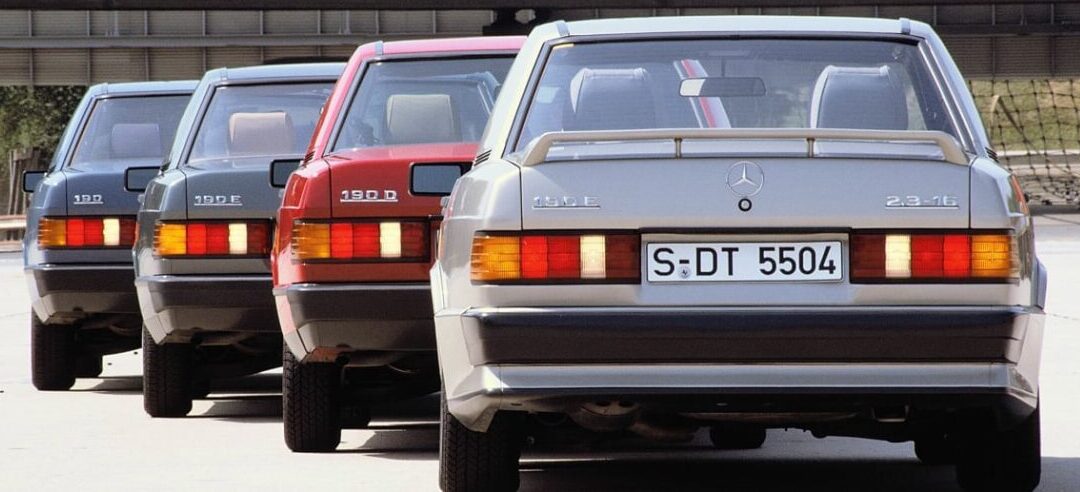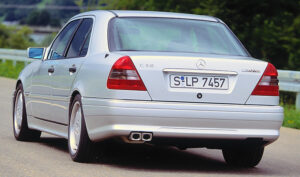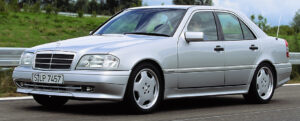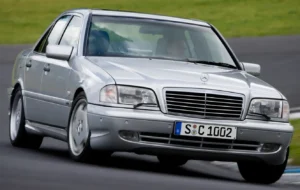AMG performance redefined: The journey from tuning house to global icon. Part one
1. The rise of AMG: From tuning pioneers to global powerhouse
2. A vision takes shape: The early days of AMG
3. Breaking boundaries in the 1980s
4. Partnering with Mercedes-Benz: A new era of collaboration
5. The Mercedes-AMG legacy in the 2000s and beyond
6. Global impact and continued innovation
7. Conclusion
The rise of AMG: From tuning pioneers to global powerhouse
The story of AMG is one of bold vision, innovation, and precision engineering, leading the company to become a dominant force in the automotive world. Emerging from modest beginnings, AMG has grown to represent the pinnacle of performance, luxury, and motorsport success, but the journey was anything but simple. Over the span of five decades, AMG transformed from a small, independent tuner of Mercedes-Benz vehicles into an integral part of the global Mercedes-Benz empire.
A vision takes shape: The early days of AMG
AMG’s roots trace back to the mid-1960s, when two engineers with a passion for motorsport decided to carve their own path. At a time when vehicle performance was often constrained by production compromises, these engineers began tuning Mercedes engines for race applications. Starting with only a few resources, they focused on squeezing every ounce of potential from their projects, quickly making a name for themselves in motorsport and among discerning car enthusiasts.
By the 1970s, AMG had become synonymous with high-performance Mercedes modifications. The company’s efforts culminated in victories on the track, earning recognition with vehicles like the 300 SEL 6.8, which shocked the racing world with its powerful performance at the 24 Hours of Spa in 1971. This racing success would prove to be a crucial foundation for the brand’s future dominance.
Breaking boundaries in the 1980s
By the 1980s, AMG had evolved from a motorsport-focused tuner into a company capable of producing road-going vehicles that pushed the boundaries of what luxury sedans and coupes could achieve. Mercedes-Benz vehicles were known for their comfort, reliability, and understated luxury, but AMG added something else: sheer power and aggressive styling.
One of the most iconic developments of the era was the AMG “Wide Body” conversion for the 560 SEC coupe. This transformation included not only aesthetic changes, with dramatically flared wheel arches and wider stances but also significant mechanical upgrades. Under the hood, the factory V8 could be replaced with AMG’s bespoke 6.0-liter engine, producing up to 385 horsepower. This blend of performance and luxury came at a hefty price—more than twice the cost of the original vehicle—but for those who could afford it, the result was a high-performance machine that could outpace most supercars of the day while still offering unparalleled comfort.
The 1980s also saw AMG venture into creating the legendary “Hammer,” a four-door sedan capable of speeds approaching 190 mph. It shattered expectations of what a luxury sedan could be and cemented AMG’s reputation for crafting vehicles that blended performance and refinement in ways few had seen before.
Partnering with Mercedes-Benz: A new era of collaboration
As AMG’s reputation grew, so did its appeal to Mercedes-Benz itself. By the late 1980s, the two companies began formalizing their relationship. AMG’s engineering expertise had proven invaluable not only in tuning vehicles for private customers but also in enhancing Mercedes’ presence in motorsport, particularly in touring car racing. In 1988, AMG-modified 190E models became the first vehicles to be officially sold through Mercedes-Benz dealerships, marking a significant step toward integration.
This cooperation would continue to deepen throughout the 1990s, with Mercedes-Benz eventually purchasing a controlling interest in AMG by the end of the decade. By then, AMG had produced models like the C36 AMG, the first AMG car to be mass-produced and sold through official Mercedes channels with a factory warranty. The C36 was an early glimpse of what was to come, combining AMG’s performance heritage with Mercedes’ build quality and comfort.
The Mercedes-AMG legacy in the 2000s and beyond
AMG’s official incorporation into Mercedes-Benz’s lineup allowed the brand to reach new heights. No longer confined to bespoke, low-volume projects, AMG began producing high-performance versions of nearly every Mercedes-Benz model. The SL60 AMG, the E55 AMG, and later, the SL73 AMG showcased what AMG could achieve when working directly with Mercedes engineers from the outset.
The R129 SL models, in particular, became the embodiment of AMG’s philosophy. The SL60 and SL73 offered staggering performance with their powerful V12 engines, with the SL73’s 7.3-liter engine later being used by supercar manufacturer Pagani for its Zonda model. This collaboration not only elevated AMG’s status but also proved that its engineering prowess could rival that of dedicated supercar makers.
As AMG expanded its lineup, the company embraced its new role as a key player in the luxury performance market. The introduction of models like the C43 and the E55 cemented AMG’s place in the automotive hierarchy, offering drivers both a high-performance driving experience and the refined luxury that Mercedes-Benz customers expected. AMG’s signature “one man, one engine” philosophy, introduced in the early 2000s, further underscored the brand’s commitment to craftsmanship and quality.
Global impact and continued innovation
Today, Mercedes-AMG is a global powerhouse in the luxury automotive sector, producing a wide range of performance vehicles that continue to set benchmarks in the industry. From compact, high-performance sedans to monstrous V12-powered coupes and roadsters, AMG remains at the forefront of automotive innovation.
With quarterly profits now exceeding $4.3 billion, AMG’s success is a testament to the power of vision, engineering excellence, and relentless pursuit of performance. The company’s journey from a small, independent tuner to a vital part of the Mercedes-Benz empire is a story of triumph, one that will continue to evolve as AMG leads the charge into the future of high-performance motoring.












